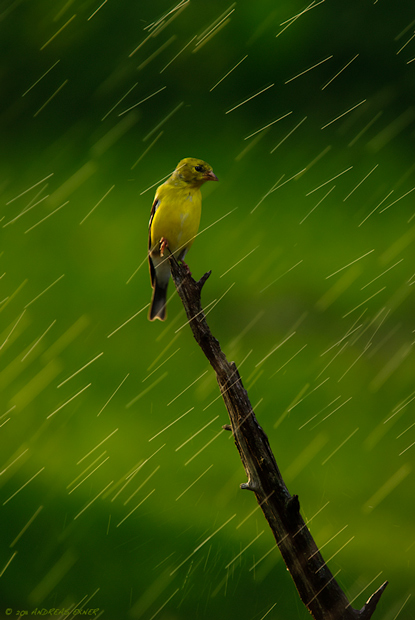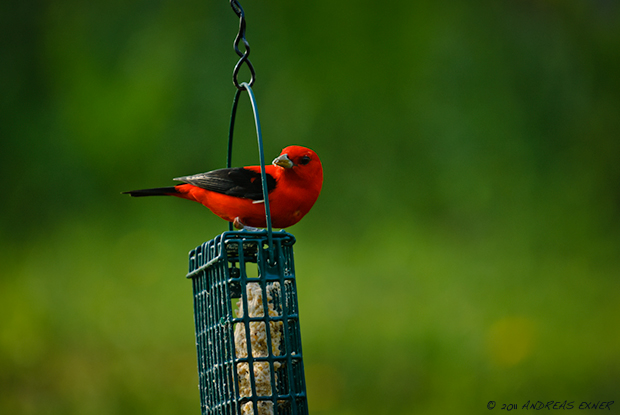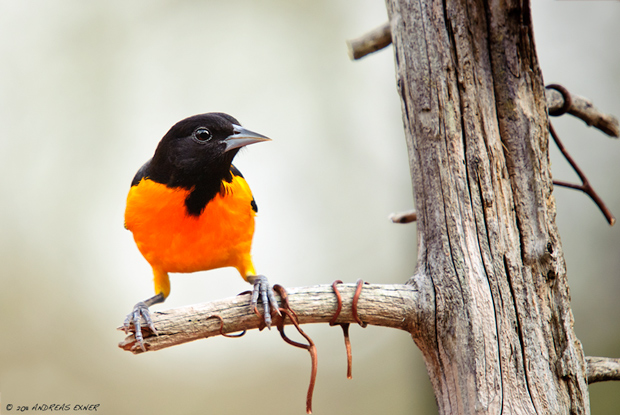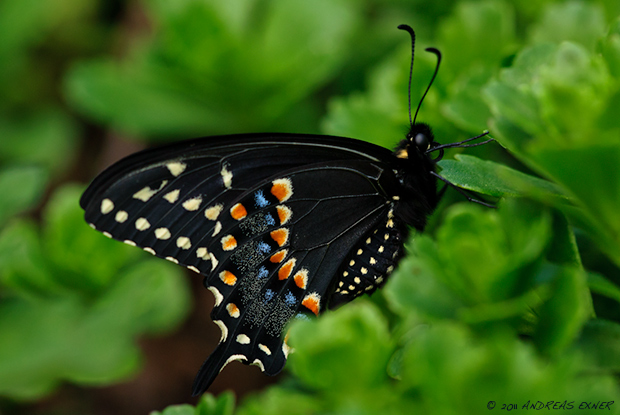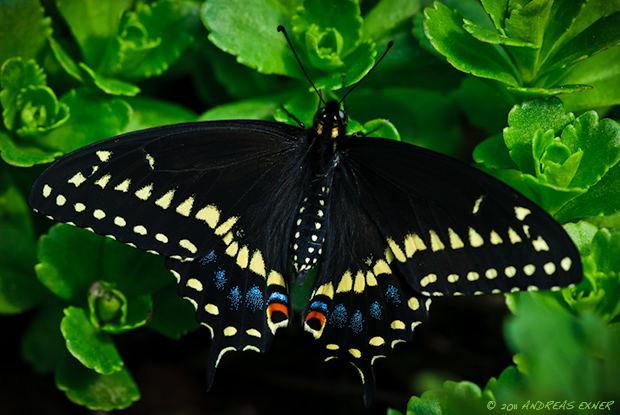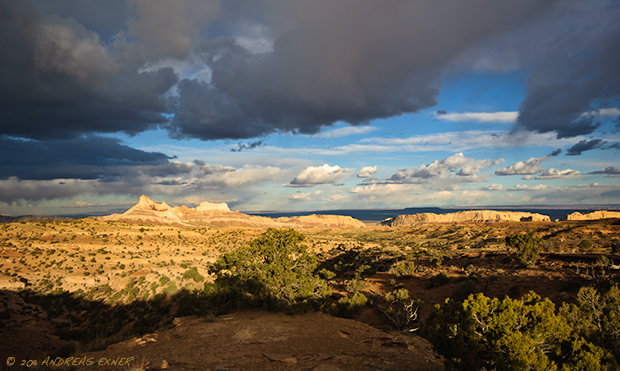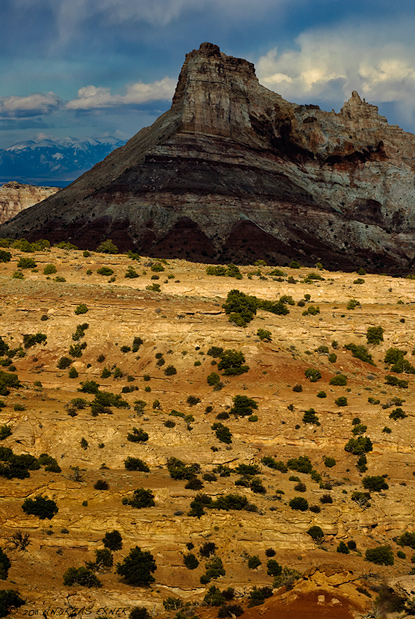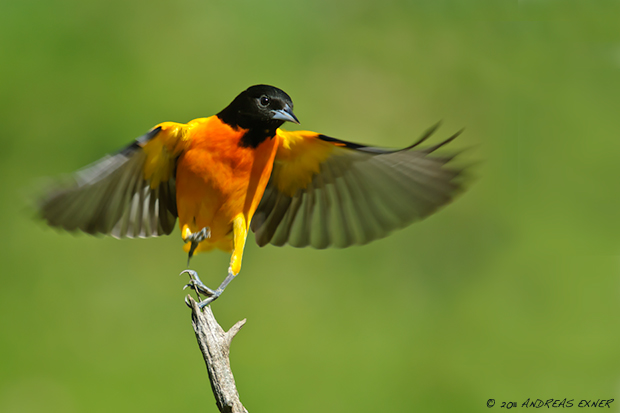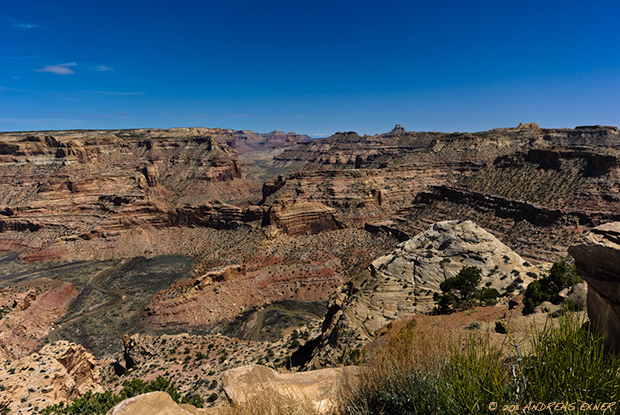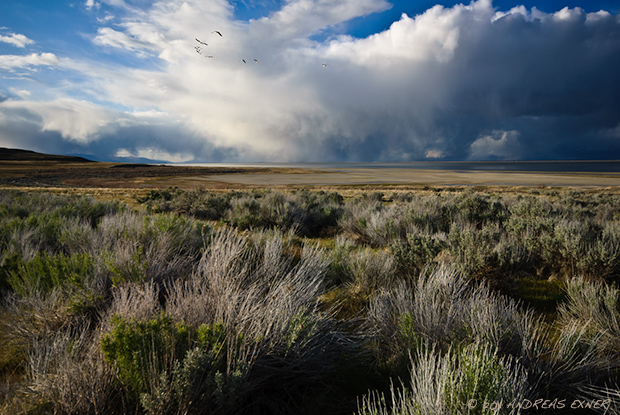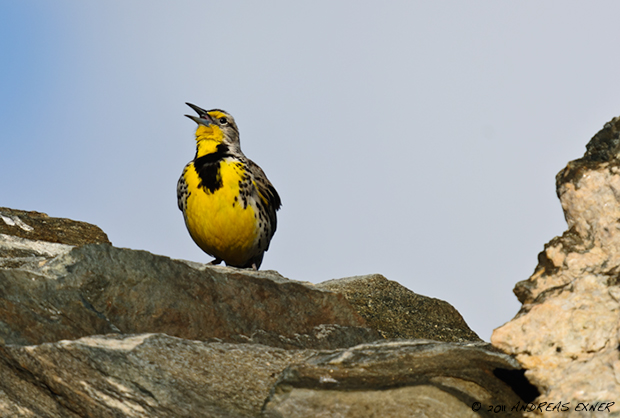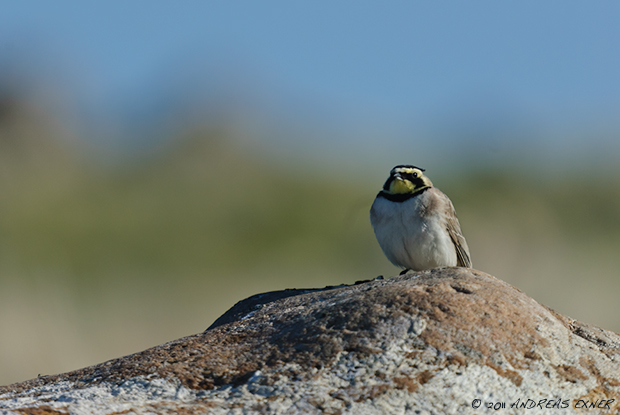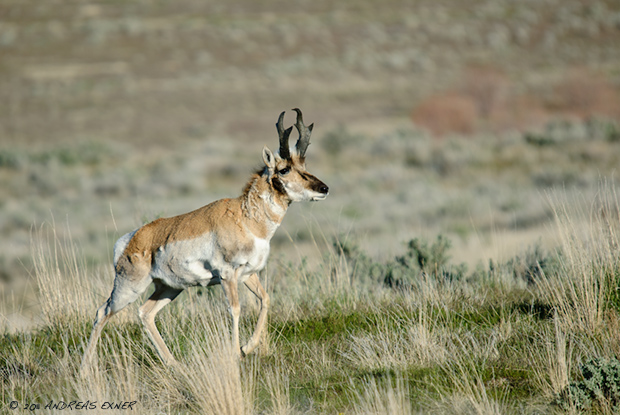
- Nikon D200, Sigma 50-500 mm f/4.0-6.3, 420 mm (630 mm FX), 1/320s, f/6.3, -0.5 EV, ISO 100
Antelope Island in the Great Salt Lake is home for a herd of Bisons. They were too far away for a picture on both days. I normally don't hesitate to make a long hike if I have a chance to see a particular landscape or animal. But I only had about three hours in the evening each day and wanted to make the best out of it.
Another beautiful animal are the Pronghorns (Antilocapra americana) on the island, and so I concentrated on a little herd. Although it is often called "Pronghorn Antelope", the Pronghorn is not an antelope. They are endemic to North America, and are the only living members of the family Antilocapridae.
The little herd was slowly moving and my memory card filled quickly. I chose the image of the buck, walking up the mountain slope in best evening light, for this post.
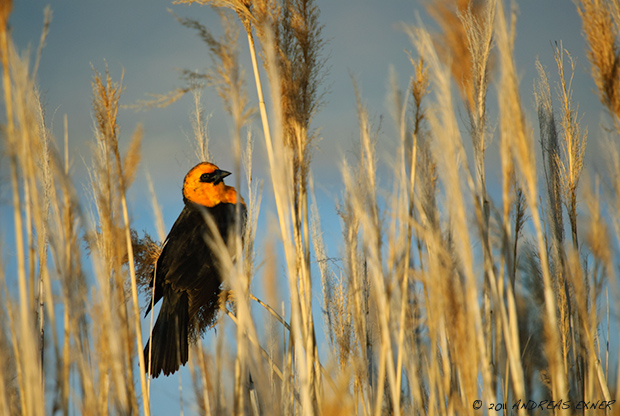
- Nikon D200, Sigma 50-500 mm f/4.0-6.3, 500 mm (750 mm FX), 1/500s, f/6.3, -1 EV, ISO 200
The maximum aperture of the Sigma 50-500 is f/6.3 at 500 mm focal length. Shooting wildlife in the last rays of sun is quite challenging with this lens. Pumping up the ISO much higher than 280 is not really an option for the Nikon D200. Despite mine is "only" four years old, it is considered already older generation and does not handle noise as good as today's latest models. Of course, I have software to reduce the noise, but this is still not the same because some sharpness is always lost in the process.
Nevertheless, I couldn't resist to snap some pictures of the Yellow-headed Blackbirds that were making a lot of "real" noise in the reeds along the lake shore. It was windy, the reed grass was swaying, and the birds were constantly moving around. But it was killer light, and so I tried, and tried, and tried….

